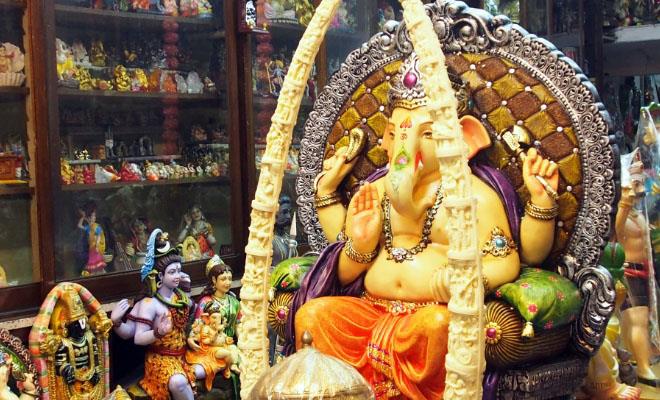PENANG STORIES
Deepavali Celebration in Penang
Deepavali
has long been embraced by the Hindu community as a significant event in the
Hindu primary scripture, Srimad Bhagavatam to commemorate the victory of light
over darkness. However, there’s more to Deepavali than its summary. Based on
one of Hindu’s finest epics called Ramayana, Deepavali is a sacred day to
commemorate the homecoming of a dignified king, who is also an incarnation of
Lord Krishna, named Lord Ramachandra, following his 14-year exile in the forest
upon slaying the demon Ravana. The kingdom of Ayodhya, which once loomed in
darkness and sadness following their king’s exile, was then brought to life by
earthen diyas (oil lamps) and fireworks to welcome Lord Ramachandra’s return.
Deepavali also signifies the end of the harvest season and as harvest
symbolises prosperity, the day is consists of a lively celebration to give
thanks and appreciation to the Gods for bestowing a good harvest.
‘Before sunrise during Deepavali day, we would wake up early and the elders
will put siakai (traditional shampoo) and gingli oil on our heads before taking
a bath’ said Mr Kisora Krishna Das who serves as the Chairman of International
Society for Krishna Consciousness (ISKCON) Botanic Gardens, ‘After that you ask
for forgiveness from your family and the elders and they will present you with
new clothes to wear’. The morning of Deepavali continues by glorifying Lord
Krishna’s alter with a song, followed by presenting offering and prayers at the
temple.
Capturing the Spirit of Deepavali
From cultural buzz to shopping frenzy, the scene in Little India, George Town
intensifies during Deepavali. Thumping, upbeat tracks of new Bollywood are
looped from day to night to attract the shopping crowd to their vibrant shops
and stalls. Here, you’ll get home decoration items, sarees, Indian sweets and
snacks, religious items and jewellery.
Open to all, shoppers passing by a few stores in Little India, George Town can
offer ghee light to Lord Krishna or Damodara. As part of the Damodara Panthal
Programme organised by ISKCON, it is believe that when one offers a lamp during
the auspicious month of Kartika, held from 9 Oct until 9 Nov, his or her sins
from the many thousands and millions of birth would be perished.
Third-generation trader Mr Ghirish of Kanganam Trading is hard at work to sell
home decoration items like rangoli (otherwise known as an Indian folk art
called kolam), diyas (small lamps and candles) and more. ‘About 80% of the
items here are imported from India,’ says Mr Ghirish before he adds that the
remaining items are brought over from China. ‘You can tell the difference just
by looking at the handiwork and texture. The ones sourced from India are handmade
and painted by master artists’. Religious statues also filled the shelves in Mr
Ghirish’s shop. ‘One of the most popular statues is Lord Ganesha. The Hindus
would put the statue of Lord Ganesha in their homes’.
Jewellery
of beautiful designs are sold in abundance. Jewellery store manager Ms
Shumeethi shares that customers have a keen eye for details for either classic
or modern designs. ‘We sell everything like earrings, bangles, chains and
necklace sets,’ she says. Most of the accessories are dotted with synthetic
precious stones for a pop of colour. ‘Some of the jewellery here has ruby,
emerald, blue sapphire or white stones. Because it’s synthetic, they’re
slightly cheaper and has nicer design too’.
New saree and dhoti choices are in abundance during this time of year. Owner of
a textile store Ms Ummadevy has spent four years in the business and can
predict trends easily. According to her, colour-wise, wearing striking colours
is the way to go this Deepavali and Ummadevy is not shy to say that the more
colourful, the better. ‘This year, the popular colours are orange, yellow and
apple green’.

